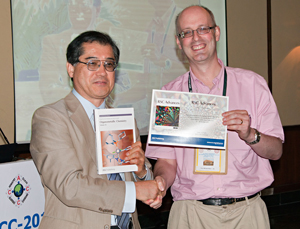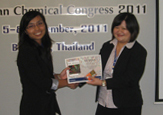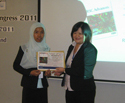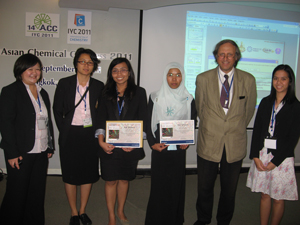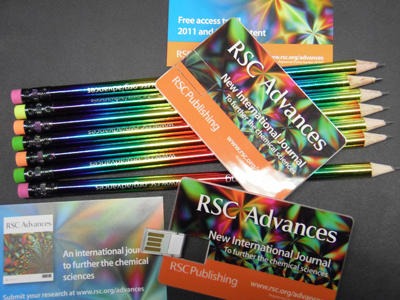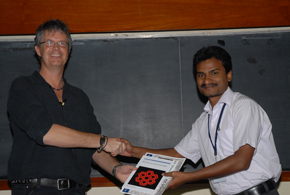Scientists in China have improved the accuracy of DNA sensors for use in disease detection.
DNA sensors detect pathogenic and genetic diseases by binding to target DNA strands that are related to the disease and giving a signal that shows how much of the DNA is present. Recent developments in the technology make use of gold nanoparticles functionalised with primer strands that bind to the DNA of interest. When the primers link to the targets, changes in the nanoparticles’ UV-visible absorbance provide a quantifiable signal.
Ken Cham-Fai Leung from the Chinese University of Hong Kong and coworkers have modified this approach to improve the sensitivity and accuracy.
Sensors employing gold nanoparticles randomly functionalised with single-stranded primer DNA can lead to primer strand cross-binding, resulting in agglomeration. This can entrap the nanoparticles and reduce the number of primer strands available for binding to the target DNA, leading to inaccurate changes in absorbance signals.
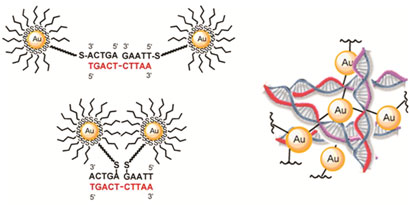
The monofunctionalised nanoparticles form discrete nanostructures (left), whilst randomly functionalised nanoparticles tend to aggregate (right)
To combat this problem, Leung and his team made monofunctionalised gold nanoparticles to which just one primer strand complementary to the target DNA was attached. The team used the nanoparticles to detect a DNA strand just 10 bases long, related to Enterococcus faecalis, a bacterium that can cause life-threatening infections. The shorter primer strands then needed to attach to the nanoparticles displayed reduced steric and electrostatic repulsions, decreasing the tendency for agglomeration. ‘Using these structurally well-defined, monofunctionalised gold nanoparticles will provide more quantitative results for DNA detection,’ says Leung.
The nanoparticle complexes are soluble in organic solvent mixtures in which longer DNA sequences are typically denatured; using such solvents could provide novel approaches for gene delivery.
‘The work has enriched our current understanding of DNA hybridisation in organic media, and it clearly shows good potential for future applications in biomedical research and new sensor developments,’ says Cong Yu, an expert in nucleic acid chemistry from the Changchun Institute of Applied Chemistry, China.
Sarah Farley
The above story was published in Chemistry World on the 7th October 2011: Detecting diseases with DNA sensors
The full article is free to download after a simple registration process:
DNA hybridization of pathogenicity island of vancomycin-resistant Enterococcus faecalis with discretely functionalized gold nanoparticles in organic solvent mixtures
Chun-Pong Chak, Josie M. Y. Lai, Kathy W. Y. Sham, Christopher H. K. Cheng and Ken Cham-Fai Leung, RSC Adv., 2011
DOI:10.1039/c1ra00304f, Advanced Article
